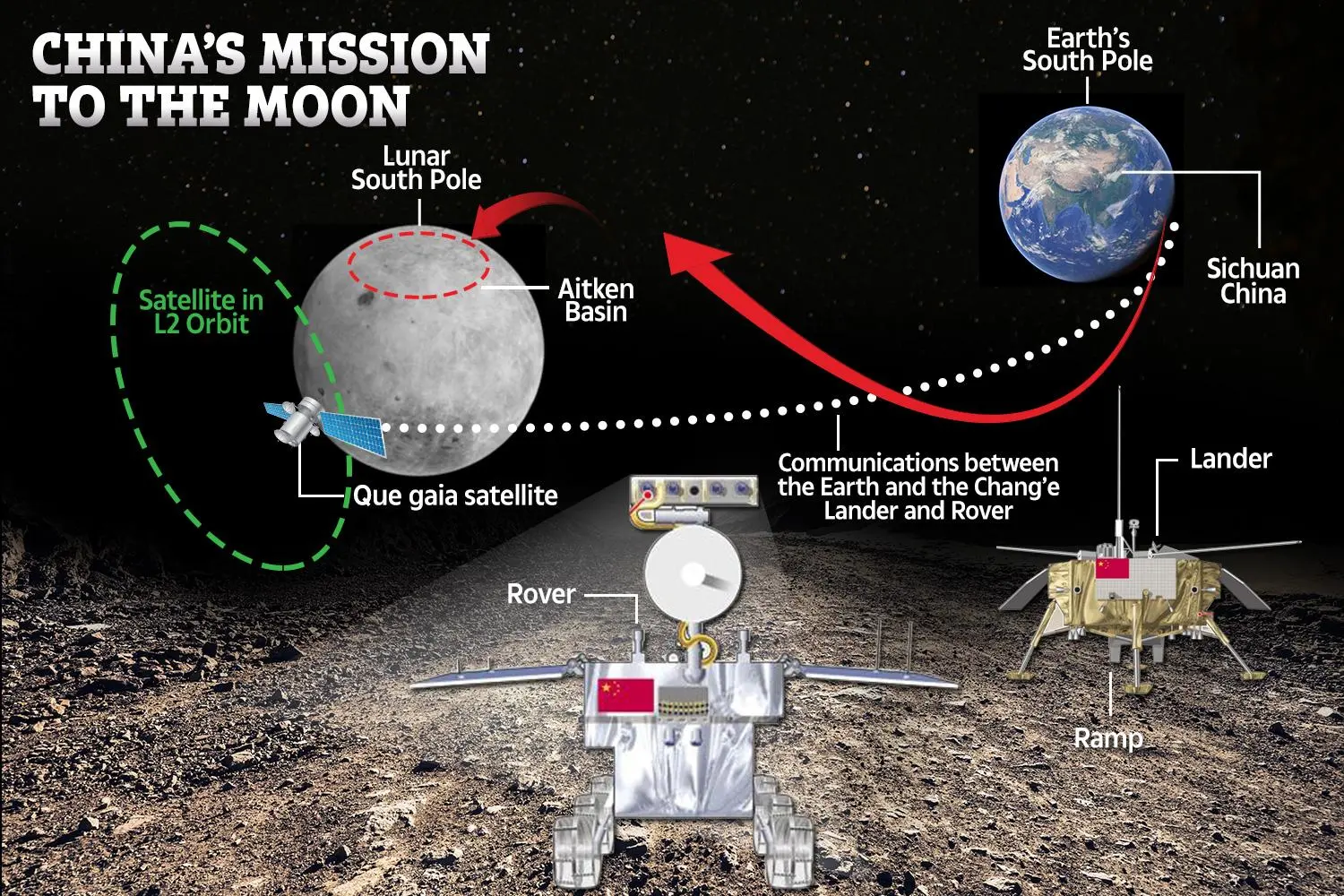In a significant escalation of its space exploration efforts, China is making strategic moves to defend its interests on the lunar surface. This ambitious endeavor is part of a broader vision that includes a series of sophisticated lunar missions, advancements in space technology, and a clear pathway towards establishing a permanent moon base.
Key Highlights:
- Launch of the Chang’e-6 mission to return samples from the lunar far side.
- Planning of the Chang’e-7 mission to investigate the lunar south pole, including the search for water ice.
- Development of the Chang’e-8 mission to test in-situ resource utilization and 3D-printing technology.
- Aiming for a crewed lunar landing before 2030.
- The establishment of the International Lunar Research Station (ILRS) in collaboration with Russia, with a target completion date by 2035.

China’s space agency has outlined an ambitious agenda that significantly boosts its capabilities and presence in space. The nation plans to conduct 100 orbital launches in 2024, setting a new national record. These missions are diverse, ranging from deep space exploration to the development of new space technology, such as the Long March 12 rocket capable of lifting significant payloads into orbit.
The ILRS, a joint venture with Russia, is a cornerstone of China’s lunar strategy. The roadmap for this international base envisions a multi-phase development, culminating in a permanently habitable outpost by 2035. Before this, a series of robotic missions will deploy necessary infrastructure and test technologies crucial for the base’s construction.
China’s efforts are not limited to peaceful exploration. The nation’s space program has potential military implications, particularly in the cislunar space, which is viewed as the next frontier for strategic dominance. The deployment of the Queqiao relay satellite, for instance, highlights China’s intention to establish a robust presence in space that could have dual-use capabilities.
Commercial and International Engagement
China’s space ambitions are supported by new launch vehicles and an increase in commercial launches, indicating the country’s commitment to becoming a leading space power. Moreover, China’s openness to international partnerships, despite the delicate geopolitical climate, underscores its strategic approach to lunar exploration.
China’s readiness to defend its stake on the Moon represents a blend of ambition, strategic foresight, and technological prowess. As the nation advances towards establishing a permanent moon base and securing its interests in cislunar space, the implications for international space exploration and geopolitical dynamics are profound. China’s approach, characterized by a combination of aggressive launch schedules, technological innovation, and international cooperation, positions it as a formidable player in the new space race. However, the potential militarization of its space endeavors raises questions about the future of peaceful exploration and the necessity for global governance in space activities.


















